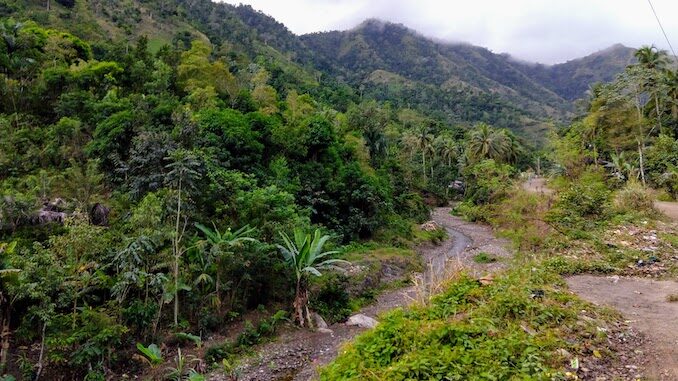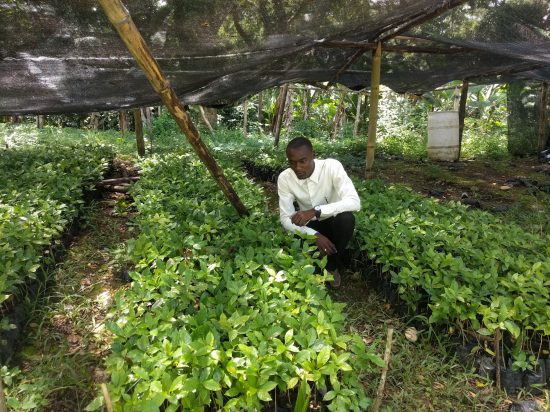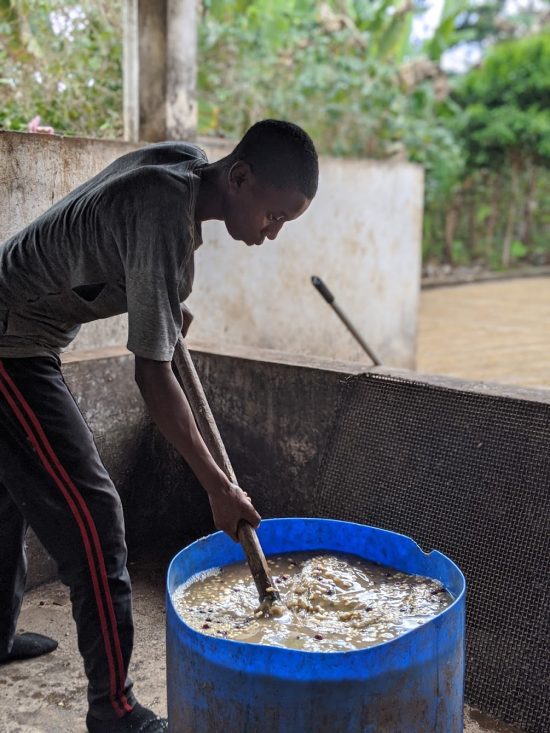
The Caribbean nation has prevailed through colonialism, revolution, and catastrophic weather to continue coffee production.
BY KATRINA YENTCH
BARISTA MAGAZINE ONLINE
Photos courtesy of Café Kreyol
This past winter, I attended Coffee Fest Portland, and was pleasantly surprised and curious to see a booth selling specialty Haitian coffee—and further, that this Haitian coffee scored 92 points on the Coffee Review scale. The coffee tasted fantastic, as it was smooth and mellow, yet a pronounced acidity managed to balance it out finely.
I simply had to know more, and upon further research, I learned that there have been considerable efforts lately by Haitians to start growing specialty coffee. With help from social change groups and specialty exporters looking to revive the economy, many want to pay Haitian farmers a fair wage for their efforts.
Haitians have experienced several ups and downs with its coffee production throughout history—so is the next upward spike aiming to tackle the specialty market?

Haitian Coffee Has a Long History
Haiti has been growing coffee since the 1700s, when it was originally called Saint-Domingue and ruled by the French. Similar to its colonial history with Vietnam, the French brought coffee seedlings to the region for commercial production, and as a result coffee became one of the main exports on the island.
This introduction to coffee growing was not met with agreement by the native population. Since much of the production relied on slave labor, this eventually led to the first successful rebellion in 1804, and hundreds of coffee plants were burnt down as a result.
Although independent farming briefly made Haitian coffee flourish in the 1940s, it dramatically declined in the 1950s because of political turmoil. The collapse of the International Coffee Agreement in 1989 and the U.S. trade embargo of Haiti in the 1990s further prevented Haiti from making any money off of coffee. Haitians thus burned more coffee plants to make charcoal for cooking fuel, and planted other cash crops when the price of coffee dramatically dropped in the 2000s.
Haiti also encountered a devastating earthquake in 2010, which still plays an impact on today’s coffee farmers and economy. Nonetheless, while it may be nearly impossible to reach large-scale production again in the next decade, Haiti’s ideal coffee-growing conditions make it a niche worth exploring in specialty markets.
What Kind of Coffee You Can Find in Haiti
Growing Conditions
Unlike other cash crops, many of us know how well coffee does in mountainous regions; Haiti has a whopping 922 of them, whose highest point is Pic la Selle at 2,680 meters above sea level—just high enough for specialty-coffee production. Regions like the Central Plateau and the Norde also benefit from ample rainfall and sunny, humid conditions, but with this can come with a higher chance of catching coffee leaf rust. Volcanic formations in Massif du Nord also provide Haitian coffee with mineral-rich soil.
Types of Coffee Grown
Although many of the coffee plants in Haiti have been burned down, the ones that remain are actually many of the very same plants cultivated hundreds of years ago. Additionally, many hardier coffee seedlings were planted in the 1990s despite the drop in price at the time. That said, a lot of the specialty coffee in Haiti is the Typica variety, but also Bourbon and Catimor. However, because Haitian coffee farmers typically don’t have access to chemical fertilizers and crop disease control products, these plants tend to yield very small quantities of cherries.
A variety that has found some success in the specialty market is Haitian Blue. Trademarked by Café Kreyol, it is the very coffee that I tried at Portland Coffee Fest. Coincidentally, it happens to be a sub-varietal of Typica, and is the same as Jamaica Blue Mountain, which is no surprise given its proximity to Haiti. Common tasting notes for this coffee include silky, buttery-bodied fullness with noticeably nutty flavors.

The Market Is Small But Mighty
You may not be able to find specialty Haitian coffee whenever you’d like at your local grocer just yet. However, a small handful of companies are not only buying small-lot offerings, but advocating to improve and increase Haitian coffee quality. Groups like Café Kreyol and Singing Rooster are on the ground at origin, working with farmers directly to provide both roasted and green coffee offerings.
Like many things in the pandemic age, “it can only go up from here.“ As specialty markets continue to seek rare coffees for their consumers, Haiti may be one of the several up-and-coming regions to provide that niche.

